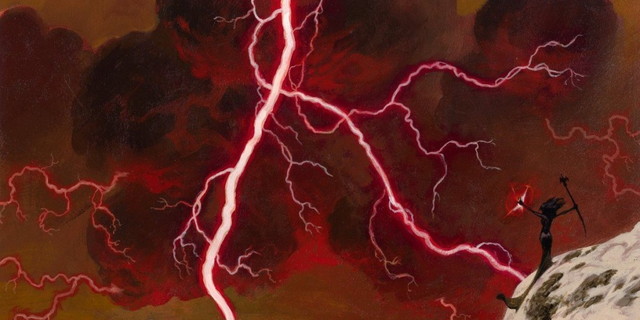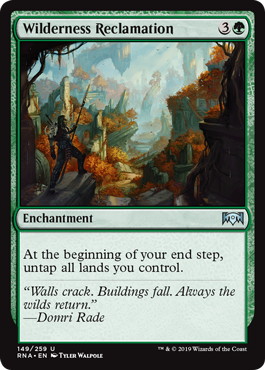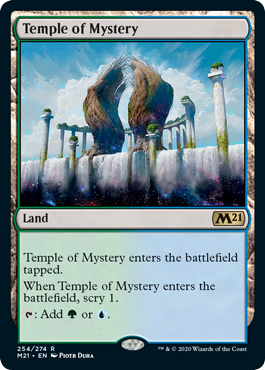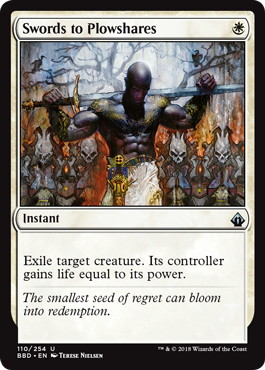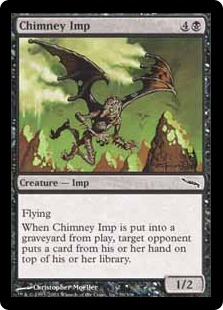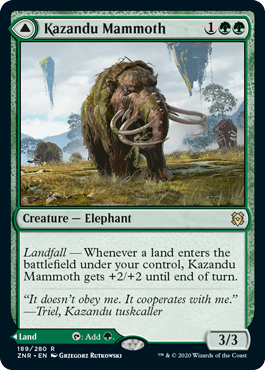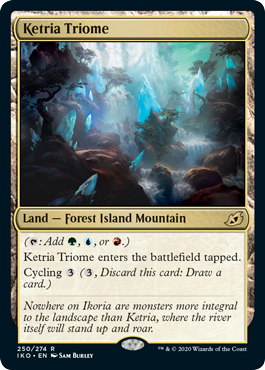Introduction
Whenever someone asks me for help with a deck, I always say to play the good cards and not the bad cards. That might sound facetious, but that’s actually the central idea of my deckbuilding process. Most of the apparent complexity of building and tuning decks comes from losing sight of the real objective of playing the most good cards and the fewest bad cards.
In this article, I’d like to share some of the key concepts and heuristics in my deckbuilding framework. I’ll go over what makes cards good and bad, what to look for in testing, and how to ultimately apply your conclusions. My team and I have had the best lists of the best decks for the last couple tournaments and this process has been a big part of that.
| Event (Format) | Event (Format) | Final Standing |
|---|---|---|
| 2020/10/9 | Grand Finals (Standard & Historic) |
9th |
| 2020/7/25 | Players Tour Finals (Standard) |
4th |
| 2020/2/7 | PT Phoenix (Pioneer & Draft) |
5th |
| 2020/1/25 | GP New Jersey (Limited) |
9th |
| 2020/1/11 | GP Austin (Modern) |
16th |
This won’t be a comprehensive guide to our deckbuilding praxis, since that’s far too big a topic for one article, but I hope to leave you with some useful tools and perspectives.
Good Vibes
I use “good” as a broad classification for the key cards in a format. This includes the best interaction, the strongest threats, and the major archetype payoffs. Note that this definition is relative. Saying a card is good is more an observation about the format than the card itself.
Some good cards are easy to identify. 《Wilderness Reclamation》 and 《Lucky Clover》, for example, were the two most powerful mana sources in Standard during their tenure. Figuring out those cards were good only took a handful of games, or even just looking at their metagame shares and win rates.
《Lightning Bolt》 in Modern is another quintessential good card. Modern games are commonly decided by cheap creatures and 《Lightning Bolt》 is not only the least conditional 1-mana removal spell, it’s also the only one that’s useful against creatureless decks. It’s telling that 《Lightning Bolt》 is not just the most played removal spell, but the most played card overall.
Not every good card is obviously good though. Good cards can be as innocuous as 《Temple of Mystery》. Pioneer Lotus Breach didn’t mulligan well, and the combo being gated by land drops meant you needed access to the key pieces early. 《Temple of Mystery》 providing both colors of mana and another look for 《Lotus Field》, 《Underworld Breach》, or additional lands meant that hands containing it were almost always keeps. It was frequently the difference between keeping 1-landers with 《Lotus Field》 and shipping them.
The 《Arboreal Grazer》s and the deck’s compact curve meant that the additional tapped lands rarely hurt it, and you were frequently happy to draw even multiple Temples. The only real change our team made Brent Vos’s initial list was going to 4 《Temple of Mystery》, but it was a big improvement.
Cards might also be good in one format or metagame, but bad in another. For example, even though 《Lightning Bolt》 is irreproachably good in Modern, it’s bad in Legacy. Cheap creatures are far less prevalent in Legacy than Modern. Legacy also has 《Force of Will》 and 《Swords to Plowshares》, which are even more efficient and broadly applicable ways to interact with creatures.
Note that when I say 《Lightning Bolt》 is bad in Legacy, I don’t mean that you shouldn’t play with it. 《Lightning Bolt》 is one of the most powerful cards ever printed and will continue to be a useful tool in every format it’s legal in. Bad cards are simply not good. I’m not talking about cards like 《Chimney Imp》 that will never see play in any format. Defining cards as good and bad is my way of figuring out the real constraints of decks, formats, and metagames.
Seeking Signal
The main things that I look for when I’m trying to identify whether a card is good or bad are whether it has diminishing returns, its value above replacement, what circumstances it needs to be effective, and its contribution to win rate.
Magic cards fundamentally have some level of diminishing returns because drawing multiple copies of the same card reduces your options. This concept is familiar with removal spells, to better cover your bases, but it applies to all classes of cards.
If you draw one copy of 《Kazandu Mammoth》 and one copy of 《Thrashing Brontodon》 in Standard, for example, you get to choose which creature to play. You’ll usually want to play 《Kazandu Mammoth》, since it’s a better creature overall, but you might prefer playing the 3/4 into 《Fire Prophecy》 mana or to block a 《Brushfire Elemental》. If you drew 2 《Kazandu Mammoth》s instead, you’d be forced to accept an unfavorable exchange. Drawing more distinct cards gives you additional room to maneuver.
Good cards overcome those diminishing returns somehow. You’re happy to draw 4 《Lightning Bolt》s because you’ll take the option to cast 《Lightning Bolt》 as many times as you can get it. Similarly, you don’t mind drawing 3 《Oko》s even though you’ll have dead cards and fewer options. You’re so likely to win if 《Oko》 lives that the dead cards don’t matter and you don’t care about other options because 《Oko》 will always be the best one.
When I’m not sure whether a card is good, I start by playing more copies of it than I think I should, usually 4. I want to draw multiples as often as possible so I can see where the diminishing returns hurt me. If they never do, that’s a strong indicator that the card is good. Even if I think a card is actively bad and I won’t end up playing with it, I try to include at least one copy so I can see the card in action and get a sense of when the options it entails might be valuable.
Value above replacement is relatively simple, but it’s the single most important characteristic of good cards. 《Shock》 is not an objectively powerful card, but it’s still a good card in Pioneer because it’s the best 1-mana burn spell in the format. Because of that, red decks almost all play some number, often the full 4. Creatures with 3 or more toughness are notably stronger because 《Shock》 doesn’t kill them. (By 《Shock》 here, I mean all the spells that are cosmetically better than 《Shock》 but functionally the same – 《Wild Slash》, 《Magma Spray》, etc.)
Good cards are also typically unconditional. This is the fuzziest characteristic, since all cards require some conditions to be useful. No spell does anything if you don’t have the resources to cast it, for example. However, cards that are consistent and broadly applicable are more likely to be good because they’ll see play in more contexts.
《Lightning Bolt》 is the best example of this. It’s a strong card in aggressive decks, control decks, and even combo decks, to remove hatebears. In a Modern tournament, you’re almost certain to play against 《Lightning Bolt》 multiple times.
Cards can be good even if they’re highly conditional, like 《Lucky Clover》, but then the metagame share of the their decks needs to make up for the cards showing up in fewer decks.
Contribution to win rate is also quite fuzzy, at least in Magic. In digital games like Hearthstone, there are data tracking websites that calculate how often a deck wins when a card is in the player’s opening hand, when they draw it, and when they play it. The highest win rate cards are the good ones.
There’s no equivalent to these websites in Magic, at least not yet. However, when I’m testing, I make small mental notes of how often I win when I draw certain cards. If I believe a card is good but I draw 3 copies of it and still lose, that makes me rethink how good that card actually is. It’s important not to overreact to outliers, but just as important to stay open to new data.
On the other hand, if you just never lose or never mulligan when a card is in your opening hand, that’s a strong recommendation for it. 《Oko, Thief of Crowns》, 《Wilderness Reclamation》, and 《Ketria Triome》 are the 3 biggest examples of this in recent Standards.
Most of the effort in this framework is correctly classifying cards as good and bad. In that sense, this isn’t a big departure from normal testing. You’ll still need to play games against tough competition, research the metagame, talk with your friends, and synthesize all the information you have. However, instead of trying to juggle the moving parts of figuring out the best deck, predicting the metagame, and working out the best builds, you focus entirely on identifying the good cards and verifying that your candidates are properly good.
Metropolis
After you’ve done the hard work of establishing your taxonomy, building decks really is as easy as playing the good cards and not the bad ones. When I’m sure a card is good, I play 4 copies without compromise. If a truly good card only goes in one archetype, that’s the archetype I’m playing.
For example, one thing that greatly simplified our testing for the Pro Tour Finals was that we quickly identified 《Mystical Dispute》 as a good card. This was a bit counterintuitive, since 《《Mystical Dispute》 is a soft counter and the only important matchup was the Temur Reclamation mirror, which always went long. Furthermore, 《Mystical Dispute》 was instantly dead the moment a 《Wilderness Reclamation》 hit the opposing battlefield. These factors meant a lot of lists only had 2 or 3 《Mystical Dispute》s in their maindeck, and even people who had 4 often shaved some in sideboarding.
However, we realized that between 《Castle Vantress》, freedom to cast sorceries, and the big mana advantage, games against a resolved 《Wilderness Reclamation》 were basically lost anyway, so we should focus entirely on the fight over 《Wilderness Reclamation》 and the games where neither player stuck one.
《Mystical Dispute》 was the most important card in early fights bar none because it was the only one mana interaction. The long scrappy games were often decided by a big fight over a medium 《Explosion》 where both players were tight on mana, so 《Mystical Dispute》 was never truly dead, especially in multiples. On top of that, 《Mystical Dispute》 was one of the best “mirror cards” against Jund and mono-white. Bad 《Convolute》 bought time better and more reliably than 《Negate》 and 《Aether Gust》, and time was all Reclamation needed in those matchups. 《Mystical Dispute》 checked all the boxes.
As a result, all our Reclamation lists had 4 《Mystical Dispute》s and all our sideboard plans left in all 4, play or draw. We knew from the start that even though the mirror was the most important matchup, we wanted a light sideboard for it because we were never even shaving 《Mystical Dispute》. Tuning was easier because we only needed to figure out the last 9 cards instead of the last 13.
It’s important not to get stuck believing a card is good when it actually isn’t. I entered testing for the Pro Tour Finals absolutely sure that 《Aether Gust》 was a good card, because it was the best answer to both 《Uro》 and 《Wilderness Reclamation》 in mirrors while being actively good against Mono-Red and Mono-Green Aggro.
However, Mono-Green and Mono-Red ultimately took a backseat to Mono-Black and Mono-White. On top of that, 《Aether Gust》 was not nearly as good in mirrors as I thought it was. 《Aether Gust》 was solid in close games and good for locking up advantages, but it was actively bad without proactive plays to back it up. The opponent would just put the 《Aether Gust》 target on top, then you’d float a bunch of mana and have one turn to produce an actual counterspell.
We even wound up shaving 《Aether Gust》s postboard for more reliable answers, though partly we expect our opponents to shave 《Uro》. I wasted maybe 4 days refusing to go below 4 《Aether Gust》 maindeck, but thankfully I had my teammates to right the course.
In the end, you’ll have to play some bad cards. If Play Design aren’t totally asleep at the wheel, there just won’t be enough proper good cards to fill out a deck. With bad cards, you want to play a mix so you’re less likely to get stuck with multiples and so you can fully leverage each card when the right conditions line up for it.
Our Omnath Adventures deck for the 2020 Season Grand Finals was a good example of that philosophy. That deck had 54 good cards and 6 open spots. We filled the deck out with a straight split of the bad cards: 《Lotus Cobra》, 《Giant Killer》, and 《Brazen Borrower》.
《Brazen Borrower》 was the strongest and most synergistic of the 3, but it was weak in mirrors since most of the permanents were Adventure creatures.
《Giant Killer》 was the most situational, both because the Adventure half was narrow and because the deck was light on white sources, but it was the best answer to opposing 《Omnath》s.
《Lotus Cobra》 was the middle option. It was poorly positioned, but only against 《Bonecrusher Giant》. And it wasn’t synergistic, but it was the second best 2-drop in the format on rate. (After 《Lucky Clover》.) These cards all had severe diminishing returns in the mirror, and playing a straight mix meant we had access to all 3 effects but rarely drew multiples of any of them.
If you notice a deck isn’t playing a good card, you should consider just adding it. For a long time, conventional wisdom said that Scapeshift decks shouldn’t play 《Lightning Bolt》 because Scapeshift needed every card to be a land in order to reliably kill on turn 4.
Then my friend Thien Nguyen, who’s played more matches with Scapeshift than I have of Magic, just added 《Lightning Bolt》 to the deck, and that become the stock list. His reasoning was that 《Primeval Titan》, rather than 《Scapeshift》, was the primary win condition, so you could both afford the interactive elements and you actively wanted them. In my view, there’s no need for that level of elaboration. The reason can be as simple as 《Lightning Bolt》 being a properly good card.
Conclusion
I had a hard time writing this article. I’ve been using this framework for a while now, but only intuitively. I had trouble articulating my thought process, and I still feel like some key concepts are missing. Still, I hope you’ve found some helpful ideas here, in the examples if not the overarching theory. Both my deck choices and my actual lists have greatly improved since I started thinking this way, and I’ll continue refining and iterating on my process.
Thanks for reading, as always. You can find me on Twitter @nalkpas if you have any comments or questions.
Allen Wu (Twitter)


